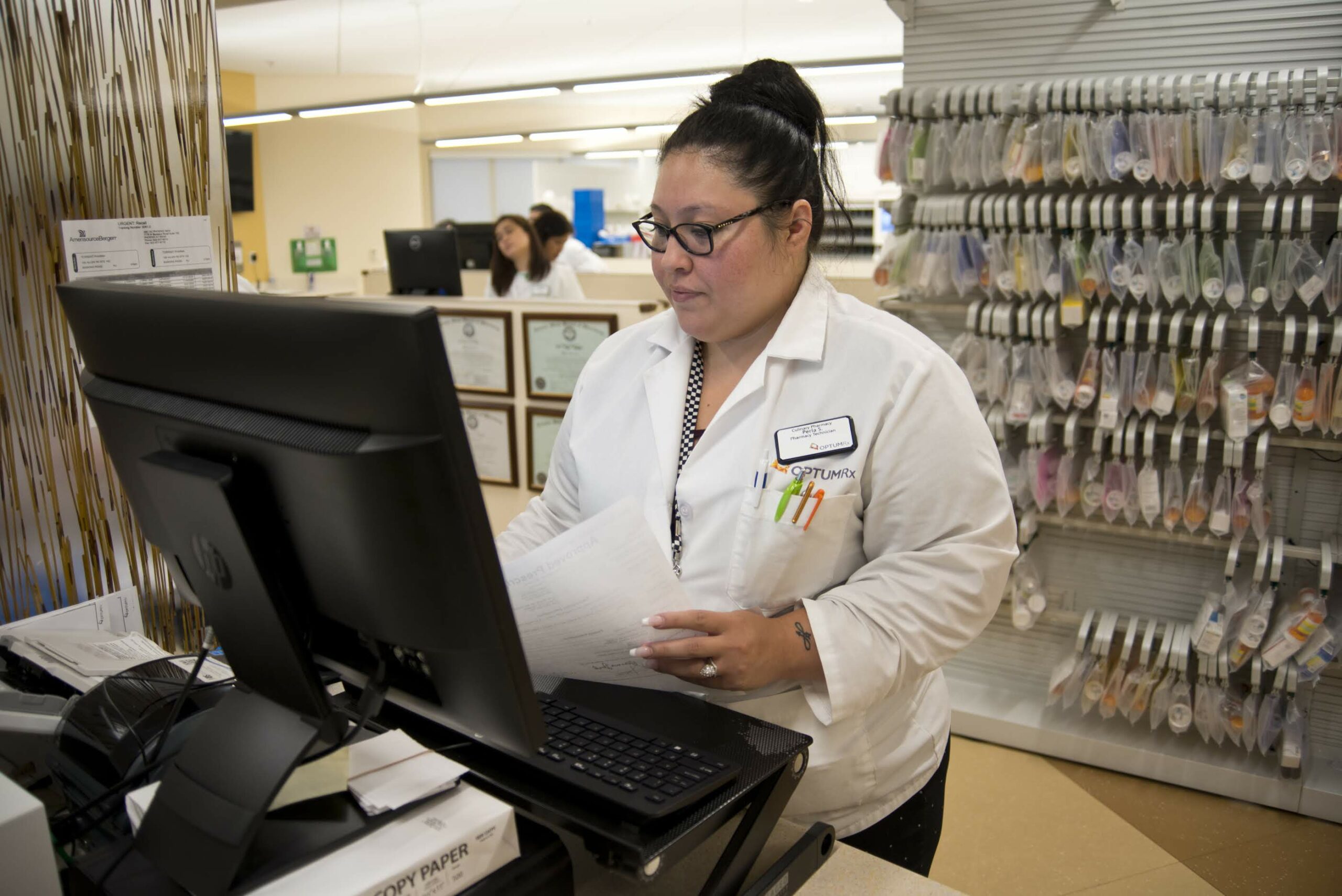The Indy Explains: Fact vs. myth on the coronavirus

Nevada’s top doctor told a health care commission this week that the coronavirus arriving in the state is “not a question of if, it’s when.”
Fears of a widespread outbreak have prompted some Nevada shoppers to stock up on cleaning products, canned food and bottled water, even before any coronavirus cases have been confirmed in the Silver State.
But what’s really known about the virus? How does it compare to illnesses that have been around for years? And should Nevadans alter their daily routines in response?
The Nevada Independent explores the facts to put the illness in perspective.
How deadly is the coronavirus compared to other diseases, such as the seasonal flu?
COVID-19, commonly known as the coronavirus, has been on scientists’ radars since December and has been linked to about 3,100 deaths worldwide and nine deaths in the U.S. as of March 3. According to data available so far, the new virus has led to fewer deaths overall compared to the common flu virus over the same span of time.
However, the fact that the coronavirus has killed fewer people than the flu this season does not necessarily mean it is less deadly than the flu when considering the Case Fatality Rate. Scientists have been studying for decades and have better data to understand influenza’s effects, whereas the coronavirus is relatively new.
The common flu generally kills 0.1 percent of those infected and results in approximately 30,000 to 40,000 deaths annually in the U.S., based on CDC data from 2010 to 2019.
Officials from the World Health Organization on March 3 said the global fatality rate of COVID-19 is actually 3.4 percent so far, which is higher than previous estimates of about 2 percent.
One of the practical challenges of addressing the coronavirus is that it generally has the same symptoms as the flu, so a lab test is necessary to determine what virus or other illness is causing symptoms. Some people may choose to seek medical attention or tests for flu-like symptoms, while others may not seek medical help but rather try drugstore medications and suppressants.
Fever, cough, sore throat, body aches, fatigue, vomiting and diarrhea can appear in both coronavirus and flu patients. The most common symptoms for the coronavirus are detailed below.
The data so far shows that the coronavirus infection has a slight predominance among men, and the death rate is generally higher among the elderly. There is no evidence that children are more susceptible to COVID-19 than adults. One 2020 study published in the Journal of the American Medical Association suggests a more “benign course” in children and younger adults.
If I get coronavirus, will I survive?
No one knows exactly how deadly COVID-19 is, but the World Health Organization reported that although it is still researching the effects of COVID-19, those who contract the virus may experience mild to severe illness. The organization added that older populations with pre-existing medical conditions such as diabetes, high blood pressure or heart problems are at higher risk for developing more serious conditions.
A post about the effects of the virus from the University of Chicago’s School of Medicine stated that roughly 20 percent of people who contract coronavirus require hospitalization and the other 80 percent experience what feels like a nasty cold and get better at home. The post also added that people with compromised immune systems or those who are vulnerable to infection are among those who may become the most ill from contracting the virus.
An outbreak of the virus began in Wuhan, Hubei Province, China, and an analysis of data from research conducted at the Central Hospital of Wuhan assessing COVID-19 risk by demographic factors from Stat News revealed that 86.6 percent of confirmed cases of COVID-19 at the hospital were for those ages 30-79 years old. The majority of confirmed cases of the virus are in China, and China CDC found that as of February 11, 2.3 percent of those with confirmed cases of the virus died.
According to the China CDC study, the fatality rate for those 80 or older was 14.8 percent, 70-79 was 8 percent, 60-69 was 3.6 percent, 50-59 was 1.3 percent, 40-49 was 0.4 percent, and the rate was 0.2 percent for those in the 30-39, 20-29 and 10-19 age brackets.
The CDC is reporting that as of March 3, there are 60 total detected and tested cases of COVID-19 in the U.S. There is no vaccine or pharmaceutical treatment for the virus.
What does “community spread” mean?
According to the CDC, “community spread” means “people have been infected with the virus in an area, including some who are not sure how or where they became infected.”
Most cases of the COVID-19 virus are traceable to exposure to the virus after traveling to an area where the virus has been active or contact with a person with the virus. However, on Feb. 26, the CDC confirmed a possible community spread case of COVID-19 in California, although officials are still uncertain whether the person came into contact with a returned traveler carrying the virus. Oregon and Washington also have confirmed cases of community spread.
An editorial from The New England Journal of Medicine said that increased community spread in the United States “could require a shift from containment to mitigation strategies.”
A containment strategy involves isolating patients and those a patient came in contact with while contagious. A mitigation strategy advocates for the isolation of people with the illness but not those they interacted with because the virus is beyond containing.
The authors of The New England Journal of Medicine editorial explained that mitigation strategies could include school closures, telecommuting, or isolating sick individuals and that research to develop a vaccine is underway.
According to the National Institutes of Health officials, a clinical trial of an early-stage vaccine is expected to begin in a matter of weeks.
As of March 3, the CDC said 22 cases of COVID-19 are related to travel, 11 to person-to-person contact, and 27 cases are under investigation. According to MyNews4 in Reno, six people have been tested for COVID-19 at the Nevada State Public Health Lab at the University of Nevada, Reno. The six tests came out negative.
What are the symptoms?
The coronavirus is a respiratory disease that can result in mild to severe illness. The major symptoms include fever, cough and shortness of breath.
Authorities recommend avoiding contact with anyone displaying these symptoms.
Symptoms can appear from two to 14 days after exposure. More information can be found on the CDC website.
What do I do if I think I might have the coronavirus?
Doctors are generally recommending that if you can self-manage your symptoms at home, you should.
“If you feel well enough that if it weren’t for coronavirus you wouldn’t see a doctor, don’t see a doctor,” Lauren Sauer, an assistant professor of emergency medicine at Johns Hopkins Medicine, told the Washington Post.
If you’re experiencing more severe symptoms of the virus — including shortness of breath, a persistent fever, weakness or lethargy, which could be indicative of pneumonia — it’s recommended that you seek medical attention. Those who suspect they have been exposed to anyone affected by the virus or have visited regions with high rates of infection should call ahead so that your provider can take steps to protect others from being exposed.
The Nevada Department of Health and Human Services has also created a notice for patients who have been in an area with confirmed COVID-19 cases to give their health care providers if they have been exposed to the virus and are experiencing symptoms.
Why is there a rush on food and bottled water?
As reports of coronavirus in the U.S. increase, many in Nevada are preparing for an outbreak by stocking up on bottled water and other staples, possibly to prepare for situations in which they can’t leave the house because of illness within their home or community. A Kaiser Family Foundation poll last month found that 43 percent of families are concerned about contracting the virus.
Costco shoppers in Las Vegas are clearing out bottled water, toilet paper and other household products in anticipation of a potential quarantine. USA TODAY also reported shoppers across the country were purchasing essentials at high rates on online stores and websites for companies such as Target, which listed various supplies as “out of stock.”
California Costco managers told the Los Angeles Times that crowds increased in their stores, mostly buying antiseptic and disinfecting wipes, water, grains, pasta and peanut butter.
Karan Girotra, professor of operations at Cornell University, told USA TODAY that panic-purchasing and hoarding goods is “a self-fulfilling prophecy” and consumers should not hoard supplies. Instead, the Department of Homeland Security recommends a manageable two-week supply of water and over-the-counter medications.
For prescriptions that are critical, it is recommended to try to get a month’s supply of the medication if the insurance company permits it.
CDC Director Robert Redfield told Congress late last week that there is no need for healthy people to stock up on supplies. On the other hand, officials in Hawaii and Minnesota have urged residents to make sure they have enough nonperishable goods and medicine to get them through illnesses like the flu.
Those who want to prepare for a potential quarantine might consider an emergency food stockpile but are advised not to panic and over-purchase goods. Even if shelves are empty, supplies will be restocked. The restocking might take a bit of time, however, as supply chains are stressed by global demand.
Will buying a face mask help?
The CDC does not recommend that people wear face masks to protect themselves from respiratory diseases unless they are a health care worker or are taking care of someone who is showing symptoms of the virus.
If worn improperly, a mask can actually increase your chance of infection because it can then transfer the virus to your face via contact.
Face masks are most effective when worn by someone who is showing symptoms such as coughing and sneezing. The U.S. surgeon general has urged people to stop buying masks unless they are showing symptoms as these masks are meant to help protect others from respiratory disease.
The World Health Organization provides instructions on how to properly wear and dispose of a face mask if you are showing symptoms and choose to wear one.
Should I change my daily habits? Avoid the gym, only work from home, stay home from school?
If you suspect you are sick or are diagnosed with the virus, the CDC recommends that you stay home and avoid interactions with other people to reduce the spread of the virus.
Although individuals worried about catching the virus could follow isolationist strategies as a form of protection, the CDC says that prevention should take the form of cleaning and disinfecting frequently touched objects, washing your hands often with soap and water for at a minimum 20 seconds, and avoiding touching your eyes, nose and mouth.
Depending on the spread of the virus, these recommendations could change, especially as other countries have closed down schools and quarantined villages in an effort to curb the spread of the virus.
Should I shake hands? Kiss? Take communion from a shared cup?
If someone is confirmed to have coronavirus or is “under investigation” for suspected coronavirus, the CDC advises people in the household to avoid the person as much as possible, including using a separate bedroom and bathroom if possible and not sharing utensils or bedding.
If the patient and a caregiver need to be in the same room, both should wear face masks, the CDC says.
Although the CDC’s guidance for members of the public who are not showing symptoms has focused on handwashing and staying home when sick, health officials addressing the outbreak in other countries have encouraged reducing physical contact.
In Australia, the health minister of New South Wales recommended a pat on the back instead of a handshake, and a French health minister advised the public to avoid traditional kisses on the cheek.
The Las Vegas diocese of the Catholic Church has instructed priests not to give communion using the shared chalice and to avoid physical contact while passing the peace during Mass.
What kills the coronavirus? Do I need special soaps or cleaning products?
The CDC recommends that you clean and disinfect frequently touched objects and surfaces daily “using a regular household cleaning spray or wipe.”
The agency also pointed to a list compiled by the American Chemistry Council's Center for Biocide Chemistries that includes cleaning products pre-approved by the U.S. Environmental Protection Agency to combat emerging viral pathogens such as coronavirus.
CDC officials say that the coronavirus is most often spread person-to-person through respiratory droplets and transmission from contaminated surfaces have not been documented. Still, the agency says the virus may be “viable for hours to days” on a variety of surfaces, so cleaning and disinfecting surfaces is a best practice.
Hands should be washed frequently, especially after using the bathroom, coughing, sneezing or before eating. Those who are unable to wash with soap and water for the recommended 20 seconds are advised to use a hand sanitizer with at least 60 percent alcohol.
Should I cancel all my travel plans?
The level of risk of contracting the virus traveling varies depending on the destination. The CDC provides travel recommendations and risk assessments for every country affected by the virus.
Right now, only four countries are considered level three, the level at which the CDC recommends avoiding all non-essential travel — China, Iran, South Korea and Italy. China and Iran have also restricted travel from the U.S.
The CDC also recommended that older adults and those with chronic medical conditions avoid traveling to Japan, which they demarcate as a level two risk, and urged visitors to take precautions when visiting Hong Kong, a level one travel destination. Visitors to level two countries are advised to “practice enhanced precautions” while those to level one countries are only instructed to take the usual precautions.
The U.S. Department of State also issues travel advisories, which can be viewed online.
The CDC also provides specific travel tips for those traveling by plane or on a cruise ship. Air travel has a lower risk for transmission than cruise ships because of how air is filtered on planes. For either method, it is still recommended to avoid contact with anyone showing symptoms and take basic health precautions.
Neither McCarran International Airport nor Reno-Tahoe International Airport are considered quarantine stations by the CDC, so officials are not conducting screenings at these airports. There are 20 quarantine stations in the U.S., located at ports of entry with the most international travelers.
For those who do choose to cancel travel plans, multiple airlines and Amtrak have waived change and cancellation fees for concerned travelers. If an airline is not already waiving these fees, any travel insurance may apply.
Is all economic and business activity going to come to a standstill?
Jerome Powell, the chair of the Federal Reserve, has said the virus will affect the U.S. economy, but he added that officials will work to limit negative outcomes.
“The fundamentals of the U.S. economy remain strong. However, the coronavirus poses evolving risks to economic activity,” Powell said in a statement released by the Federal Reserve on Feb. 28. “The Federal Reserve is closely monitoring developments and their implications for the economic outlook. We will use our tools and act as appropriate to support the economy.”
In an effort to protect the economy in the wake of the spreading virus, the Federal Reserve cut interest rates by half a percentage point on Tuesday — the largest cut since 2008.
Economists predict the stock market will likely continue to fluctuate throughout the outbreak.
The New York Times reported that the Chinese government shut down manufacturers as a way of slowing down the spread of illness. The move has affected supply chains and corporations such as Apple, Microsoft, and Pfizer.
To reduce the spread of the virus, the Chinese government extended the Lunar New Year holiday break from Jan. 24 to Feb. 2. The break originally ended on Jan. 30, and local governments have been determining when factories may re-open. Dates for resuming operations fall between Feb. 3 and March 11 with some areas yet to be notified and others adopting flexible working conditions.
The South China Morning Post reported on Feb. 25, that only one-third of small, local businesses are open and the size of companies correlates with work resumption — the smaller the company, the less likely it is to have resumed operations.
Many of the small businesses that are open in China have resumed work in their administrative and sales departments but production is paused because of a shortage of workers. Although larger companies can afford to transport workers, the smaller businesses lack funds to get their workers to and from work safely and businesses of varying sizes are suffering from a labor shortage.
Factories in China are attempting to return to regular production standards, but they are expecting a backlog of orders and an overall loss of production. The effects in China provide a case study for how businesses elsewhere might be affected should outbreaks of the virus increase in other countries.
On a more macro-scale, worst-case scenario, Scott Minerd, the chief investment officer of Guggenheim Investments told The New York Times that, “the U.S. economy would likely be tipped into a recession and stocks prices could fall by another 20 to 30 percent if the outbreak becomes a pandemic.”
Economists are not sure how the virus will affect economic growth in the U.S., but The New York Times reported that Goldman Sachs and Bank of America both lowered their growth forecasts by 0.1 percent.
It has been a rough run in recent days for the stock market, but not everything is doom and gloom. On Monday morning, stocks in Asia rebounded and the Dow increased by 1,294 points — the highest point gain in history — as world governments and central banks vowed to support the market, and it’s anyone’s guess as to how the outbreak will ultimately affect the global economy.




